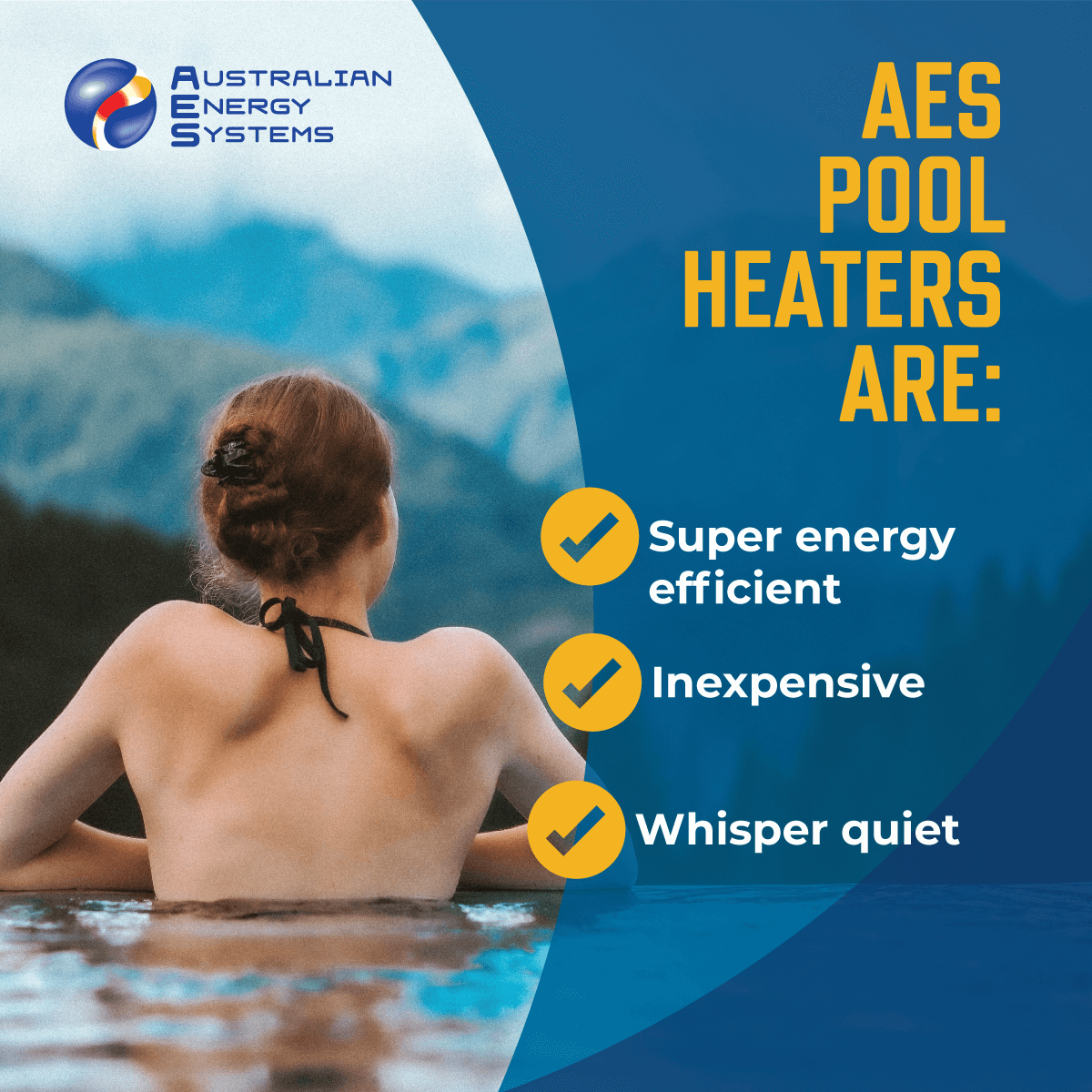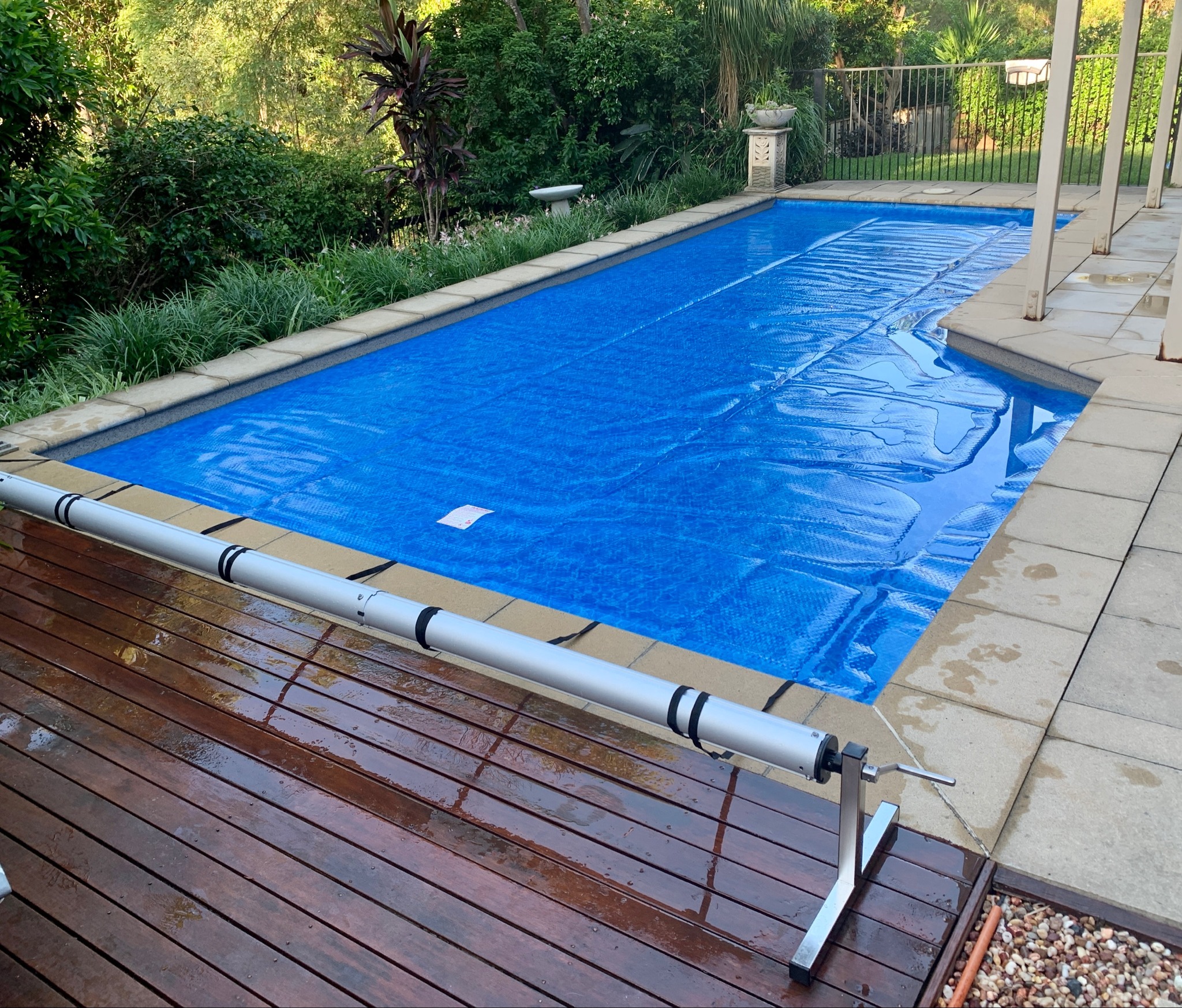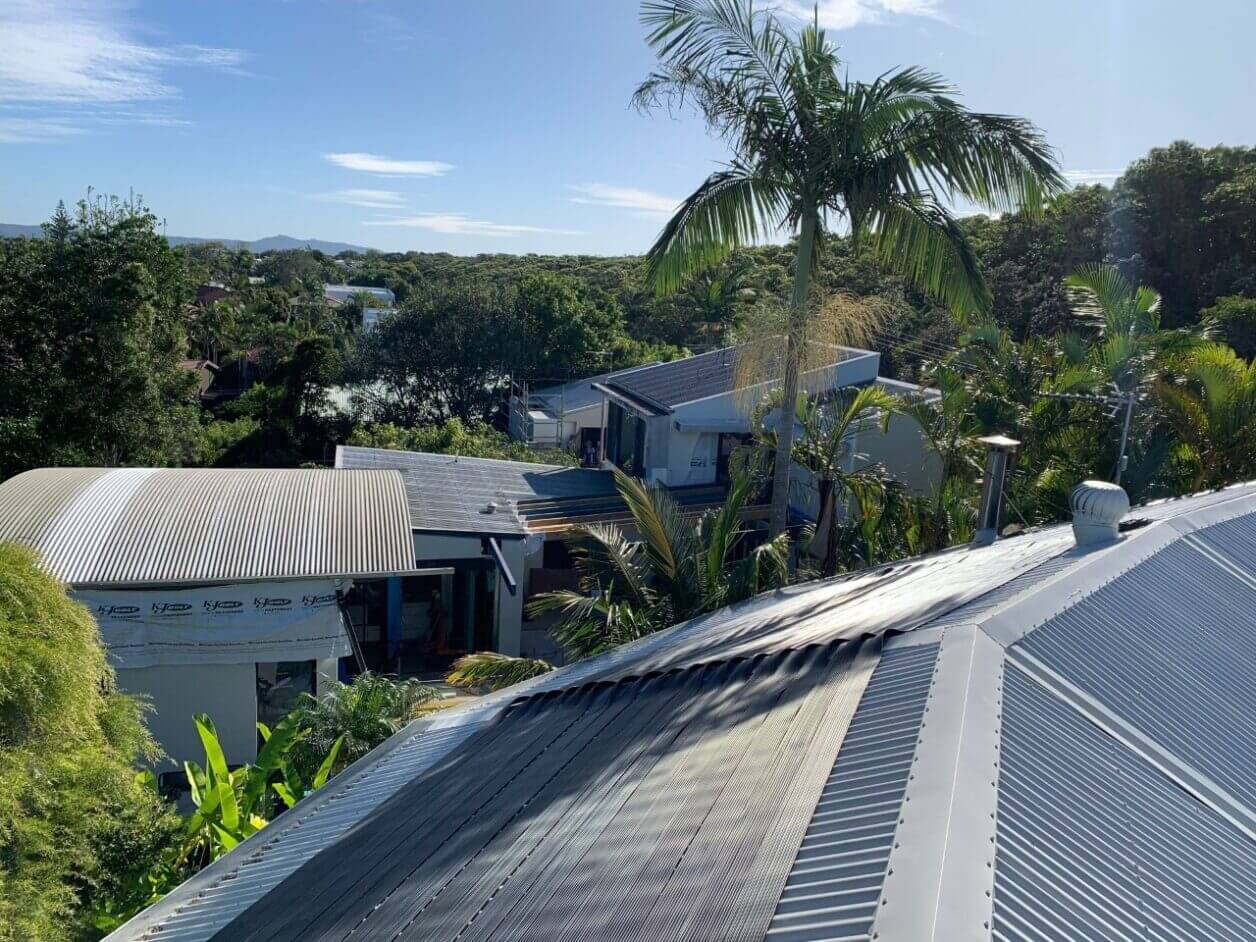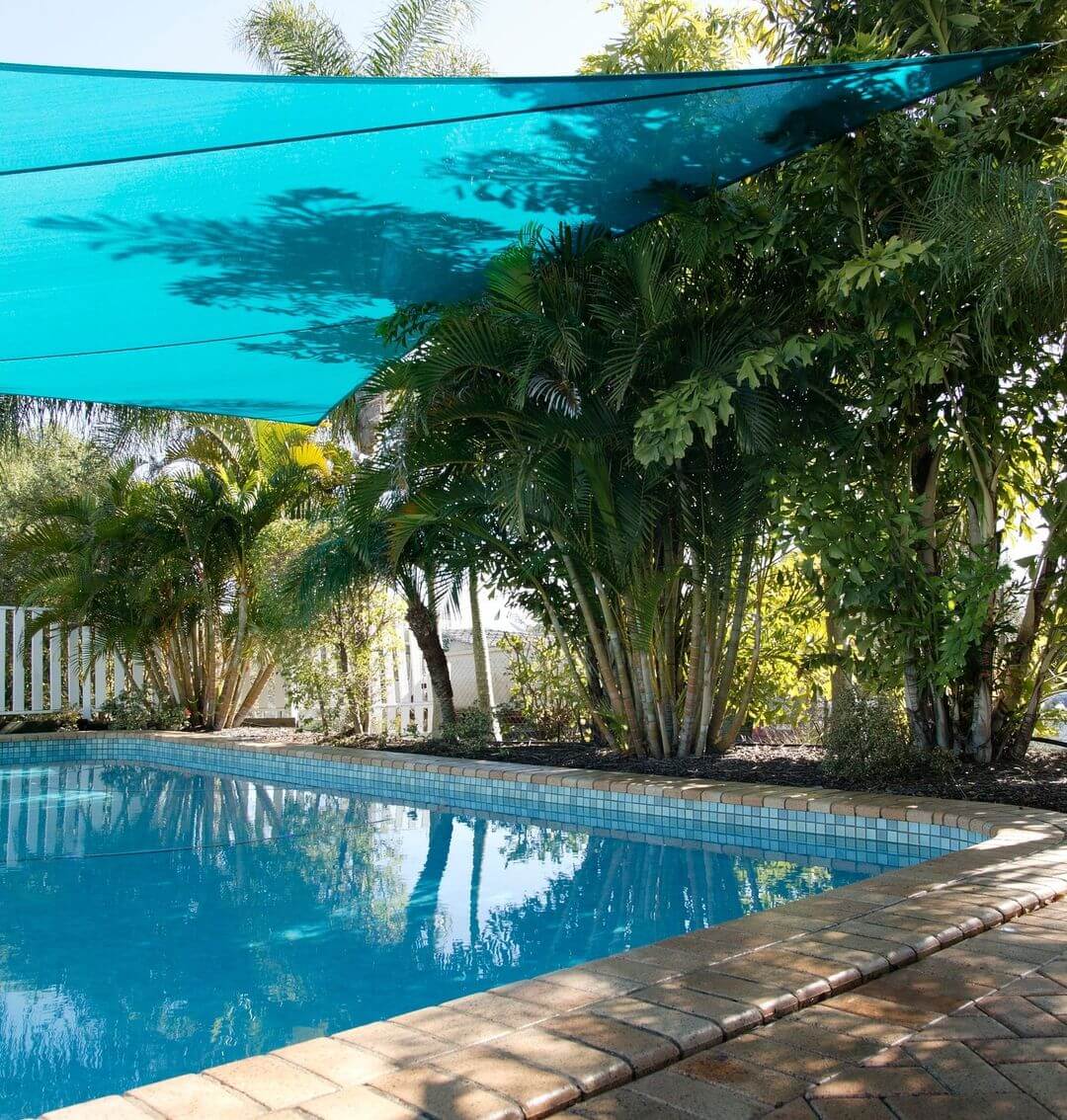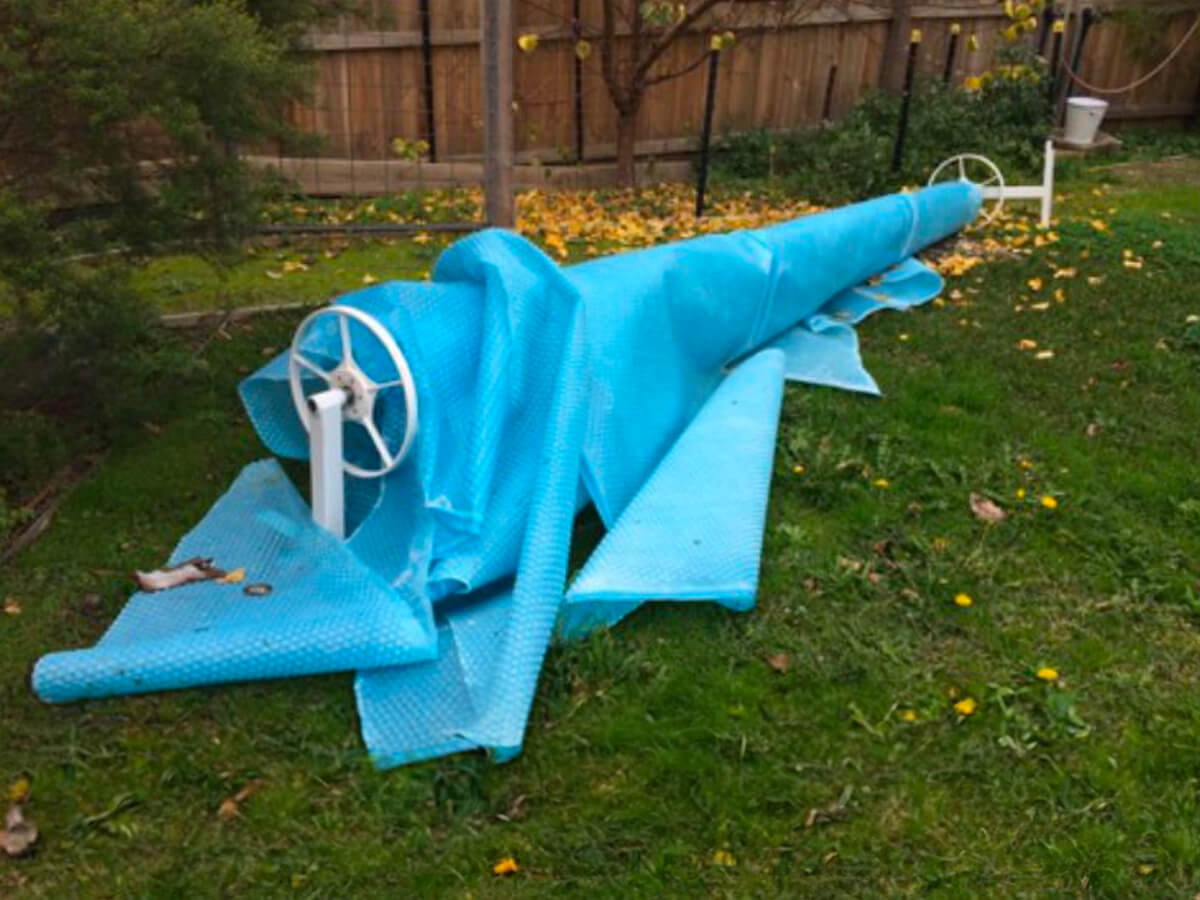A cold pool sits unused for more than half the year, and one thing we hear from our customers over and over is how it feels like a wasted investment.
These same customers wish they could heat their pool, but worry about the power bill – especially now, when electricity prices are so uncertain.
Luckily, new pool-heating technology focuses on power efficiency, and it’s easier to keep your pool warm (and usable!) year-round and keep costs down. Win-win!
The biggest consideration is ‘heat in vs. heat lost’. How can you maximise the energy to heat the water, and minimise losing that hard-earned heat?
With that in mind, here’s how to heat your pool cost-effectively, step-by-step.
Table of Contents
1. Know your heating options
There are a few ways to heat your pool:
- Solar heating
- Gas heaters
- Electric heat pump pool heaters
Solar heating relies on the sun warming the pool water that runs through a black collector mat on your roof. It’s considered the cheapest option long-term since it uses free energy from the sun, and innovative conductive materials allow solar heaters to warm pools faster and more efficiently. It does have a few limitations because it needs bright days to work effectively, and won’t deliver dependable year-round heating because it relies on the weather.
Gas pool heaters use natural gas or LPG bottles to heat internal pipes that the water flows through, heats up and flows back into the pool. Gas heaters may sidestep the need for electricity, but it’s not the most economical way to heat your pool. The upside is speed; gas heaters can warm your pool to 30 degrees Celsius in 8 hours!
Electric heat pump pool heaters work by drawing the water through a pump that sucks in outside air and heats the water before flowing back into the pool. Electric pool heaters are cost-effective systems that are also environmentally friendly and deliver consistent year-round heat to your pool, making them an even better option over solar. New inverter technology means they’re also a better and cheaper choice long-term over a gas pool heater.
Choosing a system depends on a few factors, which we’ll look at now.
1. Your pool goals
Do you want to have a few more weeks at either end of summer, or swim your way all through winter? Knowing what you want to achieve will help you find the most cost-effective way to keep your pool warm when you want it.
If you opt for a solar pool heater, the performance is based purely on the weather. It’s a good option if you want to extend your swim season into spring and autumn, and you won’t pay a cent after installation for the extra fun.
Gas heaters will keep your pool warm year-round without effort, but may not be the best choice for your wallet because of the rising cost of gas.
A budget-friendly electric pool heater – which is our top pick for year-round consistency and cost economy – needs to deliver the best coefficiency of performance (COP) for you.
The higher the COP rating of an electric heat pump, the more efficient it is (and the more money you’ll save). It may not be the cheapest upfront, but will be cheaper in the long run.
So, when you’re choosing a pool heater, you’ll need to weigh up:
- Whether it will meet your pool goals
- The cost of the system
- Its COP (if electric)
- Whether it’s the right capacity for your pool size
- It’s ongoing costs and your budget
The easiest way to check these factors is by asking for help. One of our team will happily walk you through the process and discuss your pool size, location, the environment around it, and suggest the most economical option.
3. Choose for your environment
Your home will also determine which system will deliver the best bang for your buck.
If you have room on your roof for solar pool heating, and it’s not obstructed by trees or buildings, a solar heating system has no ongoing costs. Electric pool heaters are an economical all-rounder and we tend to recommend electric over gas because new technology has made them more efficient, cost-effective and easy to install.
One mistake people make is to buy the ‘cheapest’ pool heater rather than the one that will heat their pool efficiently. Buying a pool heater that’s too small or underpowered for the size of your pool will cost more in energy usage, and strain to bring your water to the desired temperature.
If you have solar panels on your roof already, an electric heat pump could be your best option, since you’ll be able to offset your heat pump costs using your own solar energy.
4. Use solar energy to offset your heat pump
Queenslanders are lucky because our warm climate is already a leg-up when it comes to electric pool heaters. Electric heat pumps pull air from the environment, and the warmer the air, the less energy the system uses to bring it to temperature.
You can also use solar power to help offset electric heat pump costs, which is another tick in favour of electric pool heaters over any other. Electric heat pumps are already a low-energy appliance, so harnessing free sun-power can drastically reduce your pool heating and filtration costs.
5. Choose the temperature wisely
Remember that your pool isn’t a spa! Think about the temperature you want your pool to reach and whether you can drop it by a degree or two and still find it warm enough to swim in.
Typically, pools are best kept between 26 and 29 degrees Celsius.
Much like an air conditioner, every degree you add will also add extra cost, because it requires more energy from your heat pump. You could be looking at a 15% increase in energy usage for every degree you add! Simply dropping your temperature setting from 29 degrees to 28 can have a significant impact on your annual costs.
You can also opt for heat pump pool heaters that use smart inverter technology to adjust the compressor and fan motor hertz by hertz until the set temperature is reached, rather than an on/off system that uses more energy. Both are still available, but we recommend inverters for their cost savings and efficiency. Our EFI Ultra Inverter heat pump is an excellent example of an inexpensive but powerful heat pump that uses smart technology.
6. Minimise heat loss
You’ll pay bigger dollars if your pool is losing heat 24 hours a day. 70% or more heat loss occurs from evaporation, so we highly recommend covering your pool when you’re not using it.
Your best options are either a roll-out pool cover, or a liquid blanket.
Pool covers come in several thicknesses (called microns) from thin to industrial thickness. Most homeowners opt for the mid-range 400-micron pool cover that’s durable but effective at reducing heat loss and can help you save up to 50% on your pool heating energy costs.
Your other option is a liquid blanket, which is a colourless liquid you add to your pool each month. It forms an ultra-thin, invisible ‘blanket’ on the pool’s surface, reducing water loss and evaporation. It’s also totally safe for swimmers and pets, hassle-free and inexpensive. We recommend Heat Loc liquid cover for Australian pools.
Take time on energy savings
Even if you already have a pool heater or solar heating, or you’re on the opposite end of the spectrum and don’t even have a pool yet, it pays (literally) to look at every option for heating your pool.
Asking for advice is the easiest way to understand the best option for you, so please get in touch for a helping hand. We’ve been helping Aussies use their pools year-round for over 25 years, and we’d love to help you get back in the winter water too!


